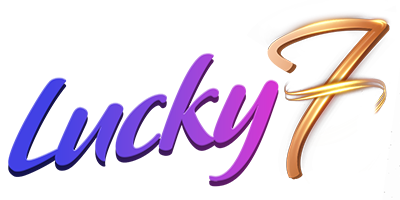Cryptocurrency has revolutionized the way you transact online, offering a blend of security, speed, and decentralization. Tron is a blockchain-based platform that emerged with the promise of addressing issues like high transaction fees and slow processing times that are common with more established cryptocurrencies. With its native cryptocurrency, TRX, Tron facilitates transactions and powers applications on its network.
As a digital payment method, TRX boasts fast transaction speeds and low costs, aiming to make it practical for daily use. Whether you're an avid participant in the cryptocurrency market or looking to dip your toes into digital transactions, understanding Tron's payment system could be beneficial. The platform supports not just the transfer of TRX but also various other tokens and assets, making it a versatile tool in the blockchain ecosystem.
Using TRX as a payment method, you can engage with a growing number of online services and merchants that accept cryptocurrency. The Tron network uses smart contracts to ensure that transactions are not only fast and efficient but also secure and transparent. This functionality potentially opens up new avenues for you in terms of decentralized finance and online purchases, all while keeping your transactions on a public ledger for verification and trust.
Understanding Tron and TRX
Tron is a dynamic blockchain ecosystem with its cryptocurrency, TRX, at its core, designed to host a range of decentralized applications and foster a thriving community.
The Basics of Tron Blockchain
Tron blockchain is a decentralized digital platform with its own cryptocurrency, TRX, which is officially named 'Tronix.' Launched in 2017, it aims to create a global entertainment system for cost-effective sharing of digital content. At its core, the Tron network employs a consensus mechanism called Delegated Proof of Stake (DPoS), where 27 Super Representatives (SRs) are elected by the community to ensure high throughput and scalability.
- Key components:
- Decentralization: Ensures no central authority controls the network.
- Scalability: Allows for handling an increasing number of transactions.
- Community: Provides a space for users to participate and engage.
TRX Coin and Its Functionality
TRX is the basic unit of accounts on the Tron blockchain. It is a multipurpose token used in the network for several functions:
- Payment: For transaction and smart contract fees.
- Governance: TRX holders can vote for Super Representatives and proposals.
- Staking: Enables participation in the network operations and earns rewards.
Here is a simple breakdown of how TRX fits into the Tron ecosystem:
| Use Case | Description |
|---|---|
| Transactions | Facilitates user-to-user transfers within Tron. |
| Access to services | Allows usage of diverse dApps on Tron. |
| Interaction with dApps | Provides a means to interact with decentralized applications. |
The Tron Network Ecosystem
The Tron network ecosystem is vast, comprising several layers, each with its distinct role:
Storage Layer
A distributed storage protocol featuring file storage systems like BitTorrent, which enhances data sharing and storage capacity within the Tron network.
Application Layer
Developers leverage this layer to create and deploy dApps and smart contracts, which provide a variety of decentralized services on the Tron blockchain.
Core Layer
Consists of several modules such as smart contracts, account management, and consensus operations that support the overall functionality of the Tron network.
Here is an overview of key elements in the Tron network ecosystem:
- Smart Contracts: Self-executing contracts with the terms of the agreement between buyer and seller being directly written into lines of code.
- dApps: Applications that operate autonomously without a central authority, receiving support and hosting from the Tron blockchain.
- Mainnet: The main network where actual transactions take place on a blockchain. Tron launched its own mainnet in May 2018, migrating away from Ethereum.
- BitTorrent: A renowned file-sharing platform integrated into the Tron ecosystem to bring about a decentralized internet.
By understanding these aspects, you gain deeper insight into how the Tron blockchain and its native token, TRX, operate within the broader cryptocurrency landscape.
How to Accept Tron Payments
To streamline the acceptance of Tron as a payment method, you will need to set up a reliable wallet, integrate a payment gateway, and potentially use e-commerce plugins or APIs designed for this purpose.
Setting Up a Tron Wallet
To start accepting Tron payments, you'll need a Tron wallet. A wallet allows you to receive, store, and manage your Tron transactions. To choose a wallet, consider factors like security, ease of use, and support for merchant services. Once you've chosen a wallet, follow these steps:
- Download and install the wallet application.
- Create an account or wallet address.
- Secure your wallet with strong passwords and backup phrases.
- Ensure that your wallet is capable of generating invoices for each transaction to simplify record-keeping.
Integrating Tron Payment Gateway
For your online store, integrating a Tron payment gateway enables you to process crypto payments efficiently. Payment gateways like NOWPayments offer support for Tron and other cryptocurrencies. The integration process typically includes:
- Signing up for a merchant account with a payment gateway provider.
- Configuring your account settings to accept Tron.
- Utilizing the provided merchant tools to integrate the payment gateway with your online store.
- Selecting your preferred processing fee structure.
- Setting up a payment window, the time frame during which the customer's payment is valid.
Look for service providers that offer low processing fees and secure transaction processing.
Utilizing Plugins and APIs for E-commerce
If you operate an e-commerce store through platforms like Shopify, WooCommerce, or Magento, leveraging plugins and APIs makes accepting Tron payments simpler. Follow these guidelines:
- Install a cryptocurrency payment plugin compatible with your e-commerce platform.
- For Shopify: Use a plugin from the Shopify app store that supports Tron.
- For WooCommerce: Add a Tron payment extension from the WooCommerce marketplace.
- For Magento: Integrate a Tron payment solution from the Magento Connect store.
- Configure the plugin or API with your wallet address to direct the payments to your wallet.
- Test the payment process to ensure seamless Tron payment acceptance on your platform.
Make sure that these solutions also allow for automatic conversion of Tron to your local currency if that aligns with your financial management.
Advantages and Considerations
In this section, you'll explore the practical perks and important factors to weigh when considering Tron as a payment method. This will cover essential aspects from its user benefits to an analysis of fees and security.
Benefits of Using Tron for Payments
Tron offers several user-oriented benefits. With a decentralized system, your transactions do not pass through traditional financial institutions, which can mean lower costs and faster processing times compared to legacy methods such as bank accounts, credit cards, and debit cards. Here are specific advantages:
- Lower Transaction Fees: Generally, Tron's transaction fees are lower compared to those of Bitcoin, Ethereum, Litecoin, and Cardano.
- Quick Processing: Transactions on the Tron network can be confirmed in seconds as opposed to minutes or hours for some other cryptocurrencies.
- Rewards: Participating in Tron transactions can yield rewards for users, providing an additional benefit and potential profit.
Security Measures and Risks
When it comes to security, Tron implements robust protocols to ensure a secure payment method. However, like any system, risks such as fraud and hacking exist. Keep these points in mind:
- Advanced Encryption: This mitigates the risk of unauthorized access and offers an added layer of protection for your transactions.
- Potential for Risks: While rare, the decentralized nature also means you should be wary of the absence of centralized fraud protection, unlike traditional bank accounts or cards.
Comparing Transaction Fees and Processing Speed
Tron's transaction fees and processing speed stand out when compared with its counterparts. Below is a comparison in terms of fees and speed:
| Cryptocurrency | Average Transaction Fee | Average Processing Time |
|---|---|---|
| Tron | $0.00009 | <5 seconds |
| Bitcoin | $1.78 | 10 minutes |
| Ethereum | $0.85 | 6 minutes |
| Litecoin | $0.02 | 2.5 minutes |
| Cardano | $0.16 | 1 minute |
These numbers highlight Tron's competitive edge in providing cost-effective and swift transactions for its customers.
Tron's Place in the Wider Cryptocurrency Market
As an emerging player in the cryptocurrency market, Tron has positioned itself as a robust network with specific attributes that cater to efficient digital transactions and content sharing. Your understanding of its place among other cryptocurrencies can help you grasp the significance of its role in the market.
Interoperability With Other Cryptocurrencies
Tron has prioritized creating bridges to other cryptocurrencies, ensuring you can smoothly exchange assets between the Tron network and other blockchains. This feature enhances the liquidity of Tron's native token, TRX, and others within its ecosystem, such as Tether (USDT), a stablecoin often used to bypass the volatility of more speculative assets like Bitcoin (BTC) and Ethereum (ETH). By allowing interoperability with major players such as BTC and other cryptocurrencies, Tron enables you to diversify your investment portfolio and helps encourage mainstream adoption.
- Exchange Integration: Tron is widely integrated into various cryptocurrency exchanges, allowing straightforward asset transfer and staking opportunities with other cryptocurrencies.
- Decentralized Finance (DeFi): The network's incorporation into the DeFi space means you can engage with decentralized financial products similar to those on Ethereum, but with potentially lower transaction fees.
The Future of Transactions on the Tron Network
Looking forward, the transactional nature of the Tron network appears promising. With its delegated proof-of-stake (DPoS) consensus mechanism, Tron allows you to participate in network governance through staking and become one of the Super Representatives or voters therefor. This mechanism is designed to offer a high-performance and scalable network, which is beneficial for handling a large volume of transactions.
- Scalability Solutions: Tron's DPoS system not only confirms transactions quickly but also supports large-scale operations, potentially handling more transactions per second than networks like Bitcoin or Ethereum.
- Circulating Supply and Market Presence: Tron's circulating supply and market presence are set to possibly make gains as the network expands and as it continues to host a growing number of decentralized applications (dApps) and NFTs, positioning it as a competitive entity in the market.
Your participation in the Tron network could involve engaging with various forms of cryptocurrencies and leveraging the network's advanced features to carry out efficient and cost-effective transactions.
Frequently Asked Questions
In this section, you'll find detailed information regarding various aspects of using the Tron payment method, from withdrawing funds to purchasing Tron currency.
How can I withdraw funds using the Tron payment method?
To withdraw funds via Tron, go to your wallet or exchange platform that supports Tron, navigate to the withdrawal section, select Tron (TRX) as the withdrawal currency, enter the amount, and provide your Tron wallet address. Confirm the transaction to complete the withdrawal process.
What are the steps to pay with Tron?
To make a payment with Tron, ensure your Tron wallet is funded. When making a payment, select Tron as your payment method, input the recipient's Tron wallet address and the amount to be sent, and confirm the transaction. The funds will be transferred to the recipient's wallet.
Where can I find open-source Tron payment gateways?
Open-source Tron payment gateways can be found on platforms like GitHub, where developers and companies share software for integrating Tron payments into websites and services.
Which wallets are compatible with Tron for receiving payments?
Wallets compatible with Tron include TronLink, TronWallet, and Trust Wallet. These wallets can be used to receive Tron payments by providing your unique Tron wallet address to the payer.
How can I purchase Tron with USDT?
To purchase Tron with USDT (Tether), select a cryptocurrency exchange that lists both USDT and Tron. Fund your exchange account with USDT, navigate to the TRX/USDT trading pair, and execute a purchase order for Tron at your desired price.




